Plant-based sources of probiotics to boost gut health
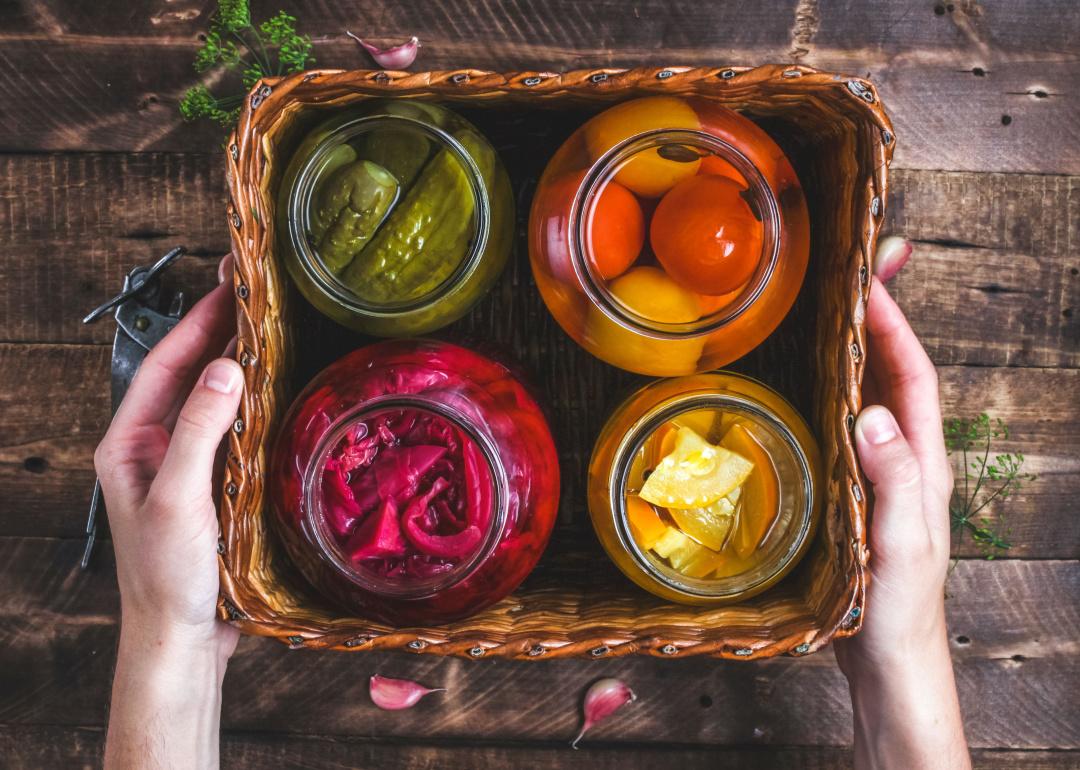
goffkein.pro // Shutterstock
Plant-based sources of probiotics to boost gut health
Glass jars of homemade pickled vegetables in box.
In 1906, Henry Tissier successfully isolated a specific microbe in the stomach of a breastfed infant. His discovery of what came to be called Bifidobacterium confirmed what many had long suspected to be true: that certain bacteria, which could be introduced to the body via food, could have positive health benefits. The demand for these probiotics, whether they come from the foods we consume or via a supplement, has only exploded from there.
Humans have been consuming fermented foods—the sole natural source of probiotics—for millennia. Originally, of course, these ancient peoples weren’t fermenting their foods for the health benefits, but simply to preserve them. Fresh produce and dairy spoil quickly, so salting, mixing with fungus, or burying foodstuffs in clay crocks, was necessary to ensure there was always food available. Later on, as technologies advanced and these primitive methods were no longer as essential, folks continued to ferment because they enjoyed the unique umami flavor that many fermented items have.
Today, many health-conscious folks choose to supplement their diets with fermented foods both because they taste good and because they have so many positive health benefits. Scientists believe that the probiotics that are introduced to the body via food do a lot to support people’s natural microbiomes—the community of microbes that live in and on our bodies—and point to evidence of improved intestinal health, enhanced immune response, cancer prevention, and reduced cholesterol.
Many of the most popular food sources of probiotics are dairy-based, such as cheese, yogurt, and kefir, but there are plenty of plant-based options too. Thistle has compiled a list of fermented foods that are a rich source of probiotics and are totally plant-based. Add any one of these to your regular diet and your body will be sure to thank you.
![]()
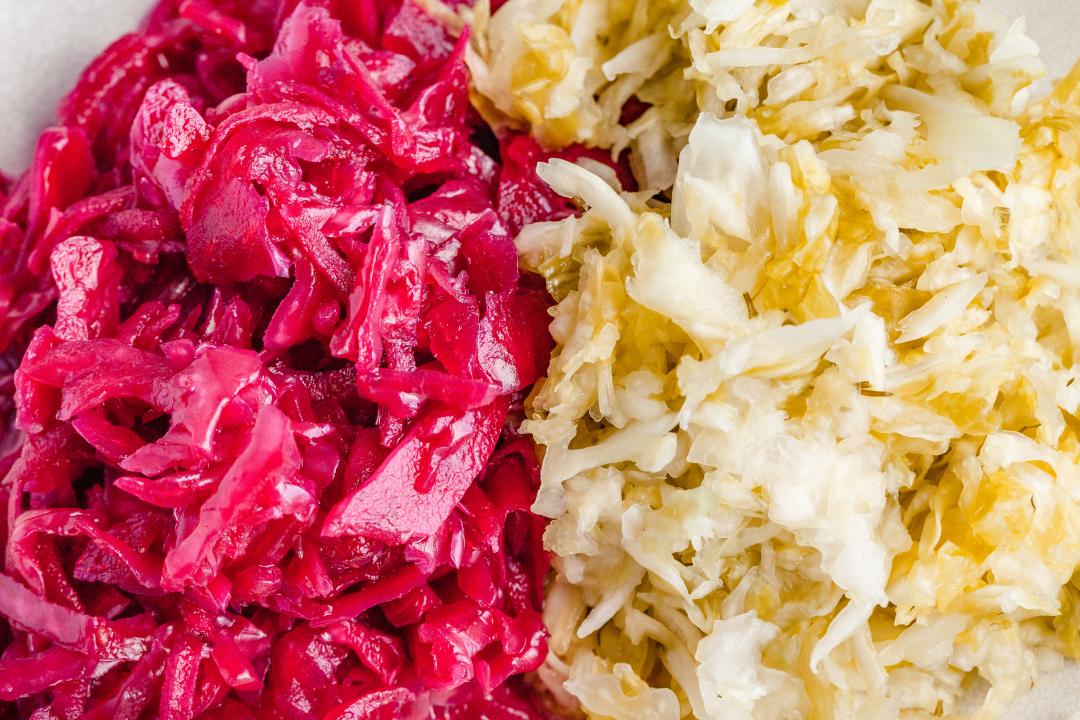
Thistle
Sauerkraut
Side by side view of red and white sauerkraut.
Sauerkraut is a type of fermented cabbage that is thought to have originated in China some 2,000 years ago. Made with fresh, sliced cabbage and tons of salt, the side dish is naturally gluten-free and similar to kimchi, a favorite Korean staple.
The primary difference between the two foods is that kimchi includes several additional seasonings—including fish sauce that makes it, in its traditional preparation, not vegan-friendly—which alter the flavor.

SewCreamStudio // Shutterstock
Nondairy yogurt
Organic coconut yogurt in wooden bowl.
Typically, yogurt, which has been consumed by humans around the world for millennia, is made with animal milk that has been intentionally fermented with specific bacteria. However, nondairy alternatives—like soy, almond, coconut, and oat yogurt—have been on the market for at least the last 50 years.
While these alternatives allow vegans and vegetarians to get in on the health benefits of the snack, wise consumers will keep an eye out for the added sugars and chemical thickeners that are more likely to make their way into the nondairy versions.
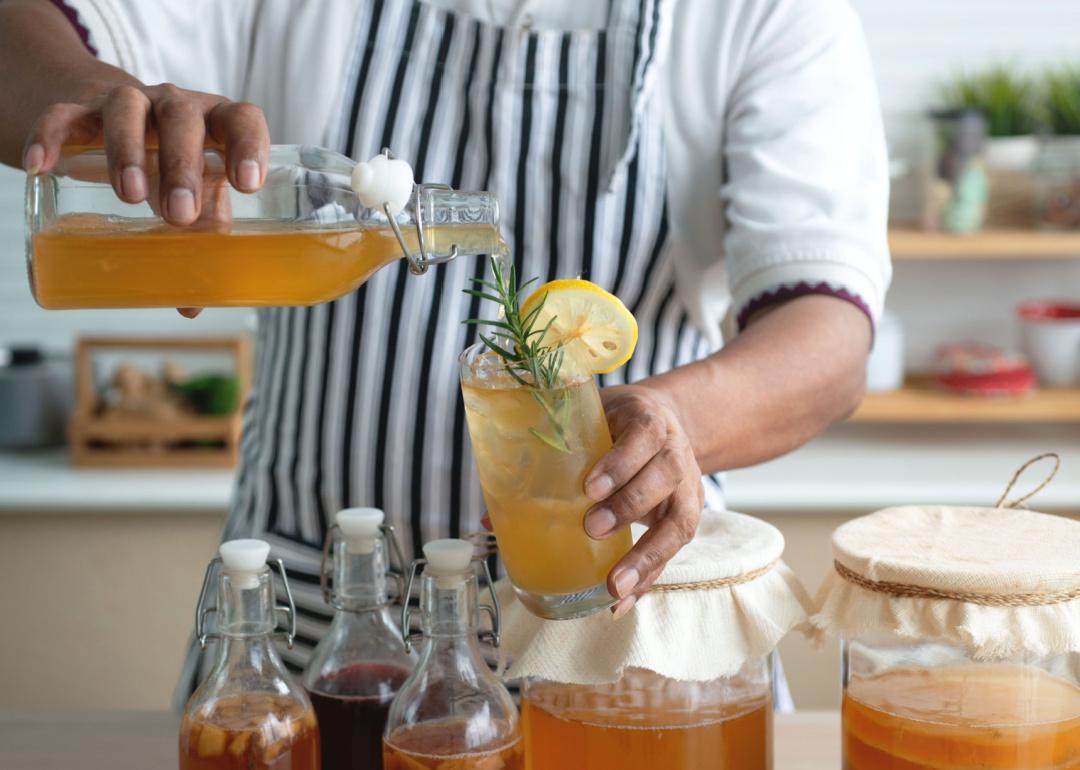
chomplearn // Shutterstock
Kombucha
Person preparing kombucha drinks.
First appearing in northeast China around 220 B.C.E., kombucha is a fermented drink that is typically made with green or black tea, sugar, yeast, and bacteria. It was popular in Europe until World War II when sugar shortages made it almost impossible to brew.
These days, you can find a huge variety of bottled kombucha on the market in all sorts of flavors, both carbonated and still. It’s also possible to make kombucha safely at home if you can get your hands on a SCOBY, the symbiotic culture of bacteria and yeast that turns tea into kombucha.
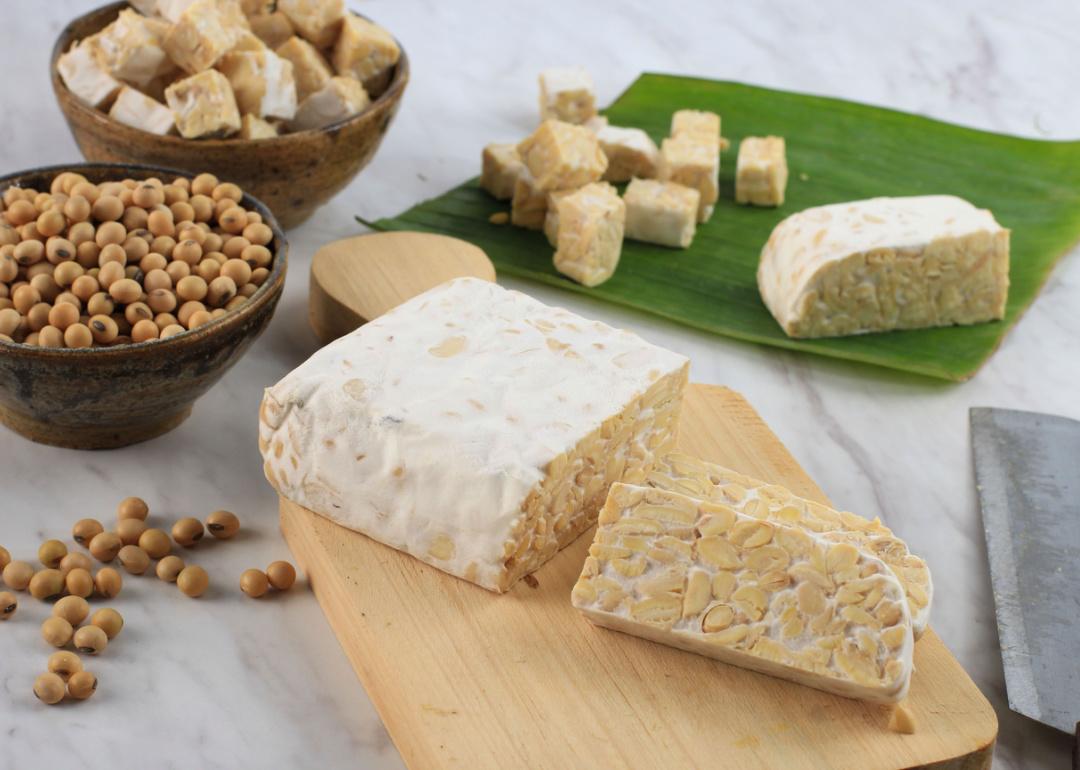
Ika Rahma H // Shutterstock
Tempeh
Raw tempeh slices and soybeans.
One of the few soy-based foods that did not originate in China or Japan, tempeh can be traced back to the Indonesian island of Java, where it has been enjoyed for at least the last 400 years.
Like tofu, these cakes can be prepared in all sorts of ways, including steaming and pan-frying, and tend to soak up the flavor of anything cooked with them, making them perfect for marinading. While tempeh has traditionally been made from soybeans, there are also versions made with other beans, chickpeas, or lentils.
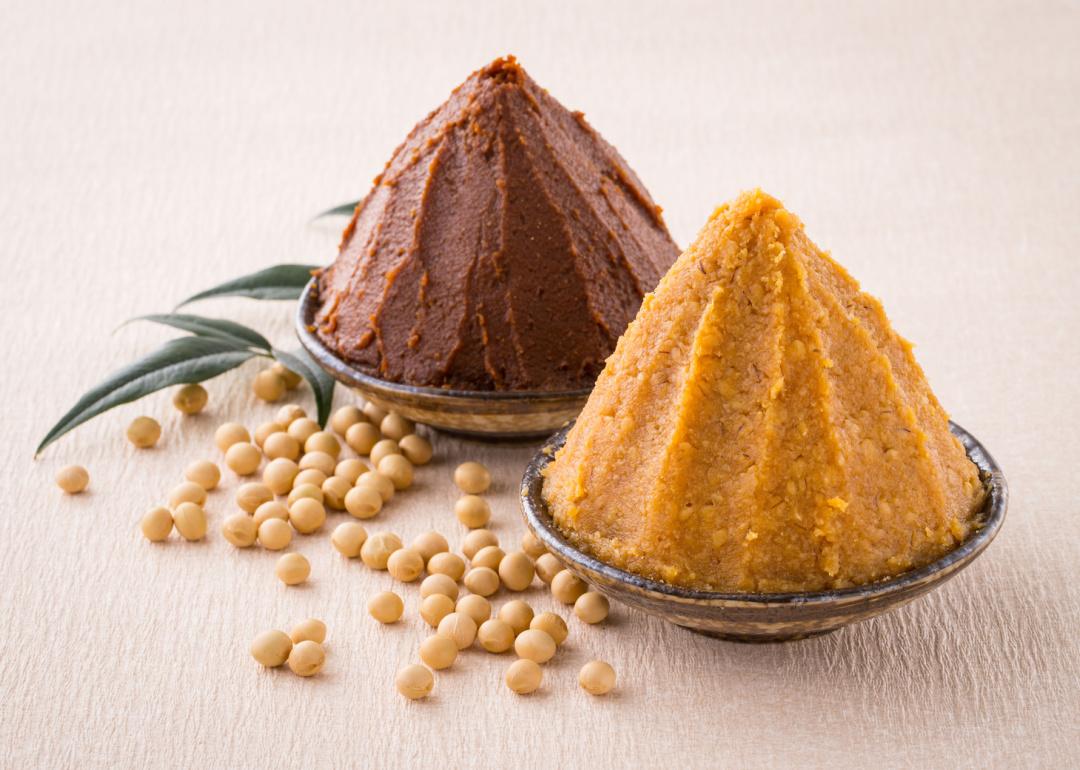
jazz3311 // Shutterstock
Miso
Miso paste in small dishes.
Another ancient food, miso has been consumed for thousands of years in Japan. Made of soybeans and mold—specifically, a bacteria named Aspergillus oryzae—the traditional preparation of this paste is now considered an art form in its native country.
An agile cook can add miso to all sorts of dishes, including soup, salad, baked goods, and bread. For those who prefer to follow a low-soy diet, new miso-esque superfoods made from ingredients like farro, lima beans, and chickpeas have begun to pop up on the market.
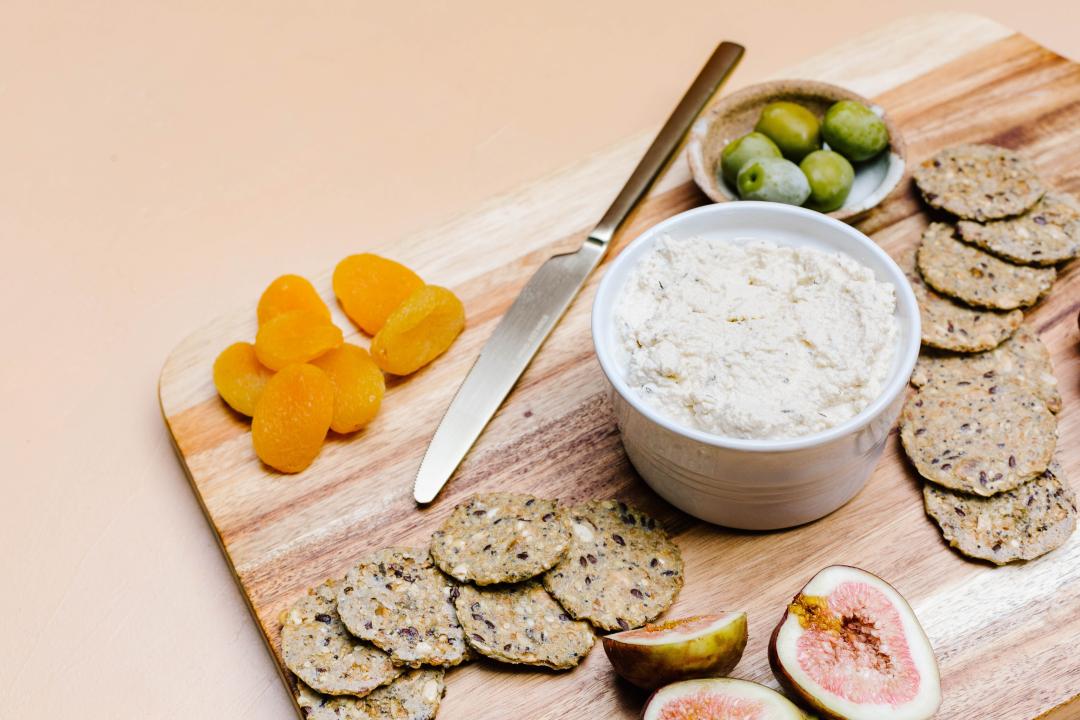
Thistle
Vegan artisan cheeses
A vegan artisanal cheese on a cutting board with crackers, fruits and vegetables.
At one point, vegan cheeses, made from ingredients like cashews and coconut, were a sad, bland alternative to their dairy-based predecessors. These days, however, artisan cheesemakers have stepped up their game, especially when it comes to aged cheese varietals that mimic picks like feta, bleu, and Gruyere. The fermentation that these plant-based cheeses go through boosts both the probiotic benefits and the flavors.
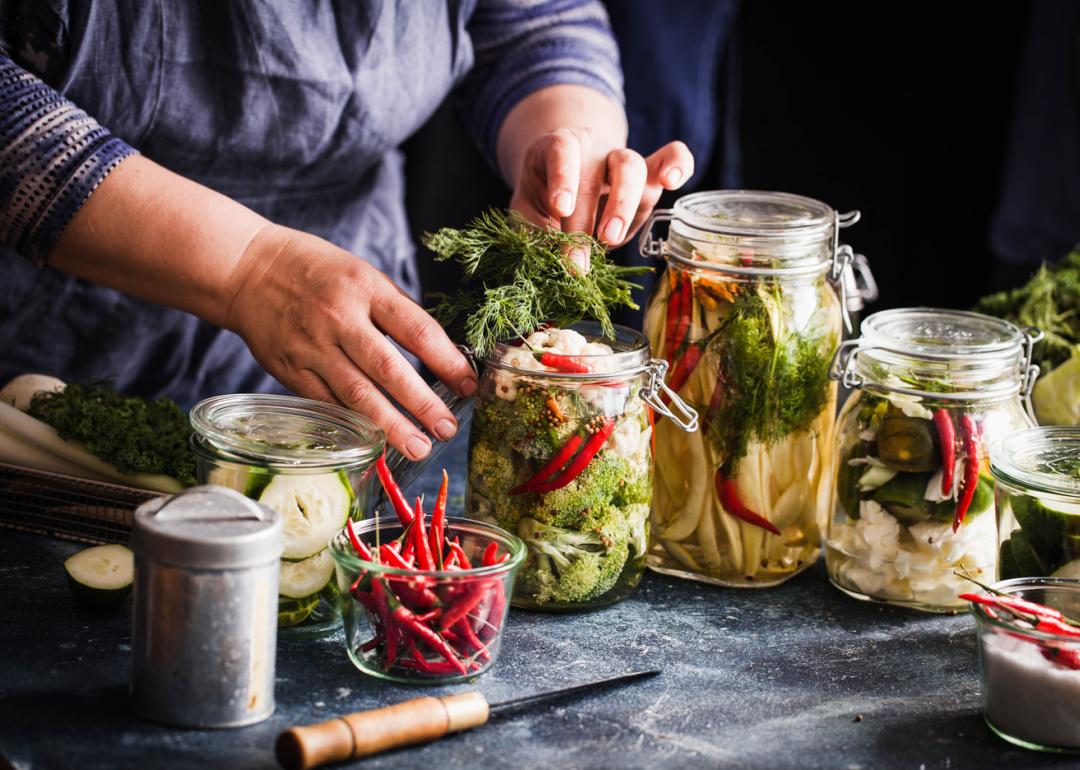
casanisa // Shutterstock
Pickled vegetables
Person preparing pickled vegetables in jars.
It is thought that pickling dates back to 2030 B.C.E. when ancient Egyptians sought to preserve cucumbers that had been imported from India. Of all the plant-based probiotics on this list, pickled vegetables—which require just a simple brine of vinegar, sugar, and salt for fermentation—are likely the easiest to make at home.
They’re also entirely customizable: Almost any food, including cucumbers, asparagus, beets, and okra, can be pickled, and flavor profiles can be swapped out with various seasonings, making them suitable for any palate.
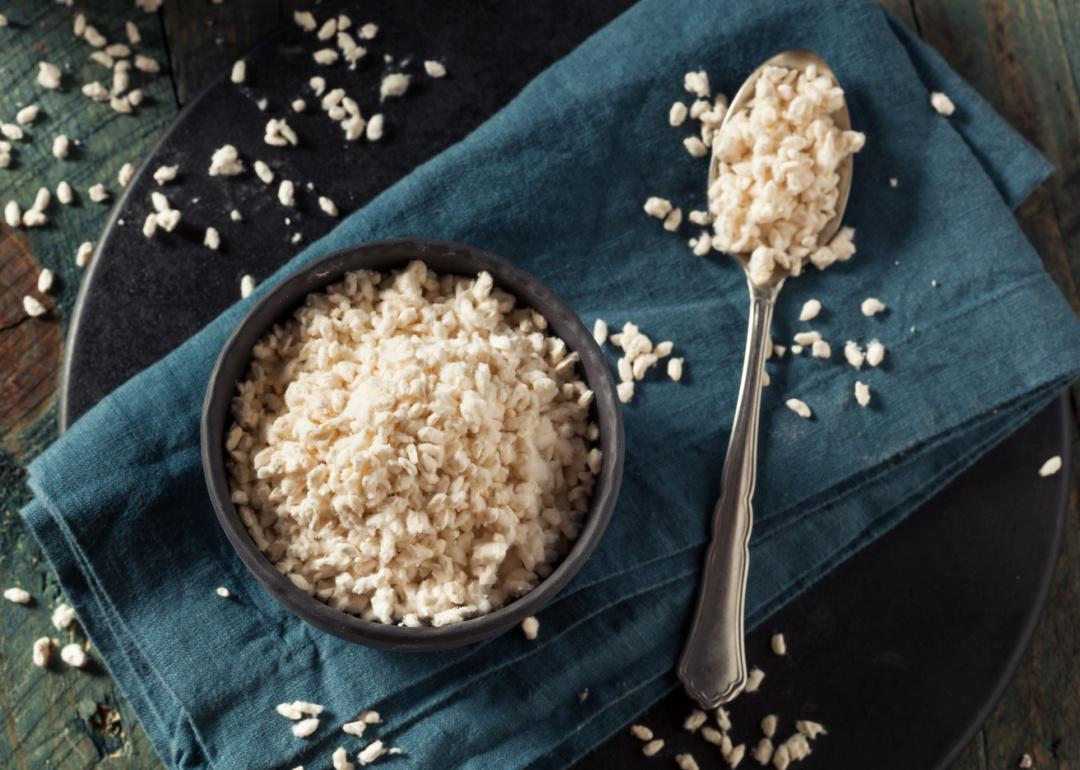
Brent Hofacker // Shutterstock
Koji
Raw organic white koi rice in bowl.
Dubbed Japan’s national fungus, koji is a fungus that is used to ferment beverages like sake and condiments like miso. Most often, koji is added to rice, which is then fermented for two days and can either be eaten on its own or used in the production of other food staples, like alcoholic beverages or rice wine vinegar. The results often taste perfectly umami—sweet, savory, salty, and plain old funky.
Additional research by Emma Rubin. Story editing by Jeff Inglis. Copy editing by Robert Wickwire. Photo selection by Clarese Moller.
This story originally appeared on Thistle and was produced and
distributed in partnership with Stacker Studio.